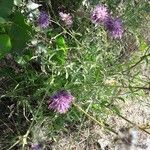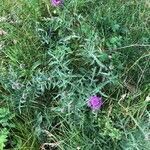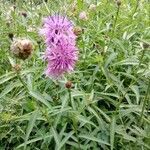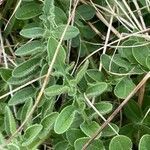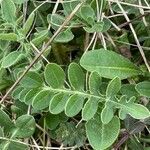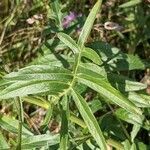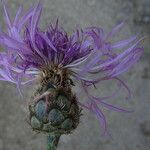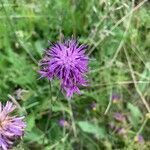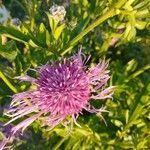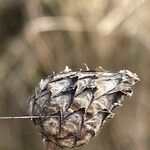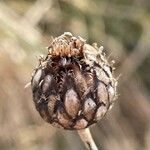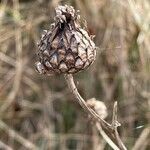Taprooted perennial 3–15 dm, the caudex clothed with the long, chaffy-fibrous, persistent lf-bases of former years; herbage hirsute or subglabrous, and slightly arachnoid when young; lvs deeply pinnatifid, or the basal ones sometimes merely toothed; heads few or solitary, naked pedunculate, hemispheric or ovoid; invol 16–25 mm, its bracts with a conspicuous, blackish, scarious, pectinate-fringed tip; fls generally purple, the marginal ones usually enlarged; pappus 3–6 mm; 2n=20, 30, 40. Fields and waste places; native of Europe, escaped from cult. and found here and there in the n. part of our range. June–Sept.
